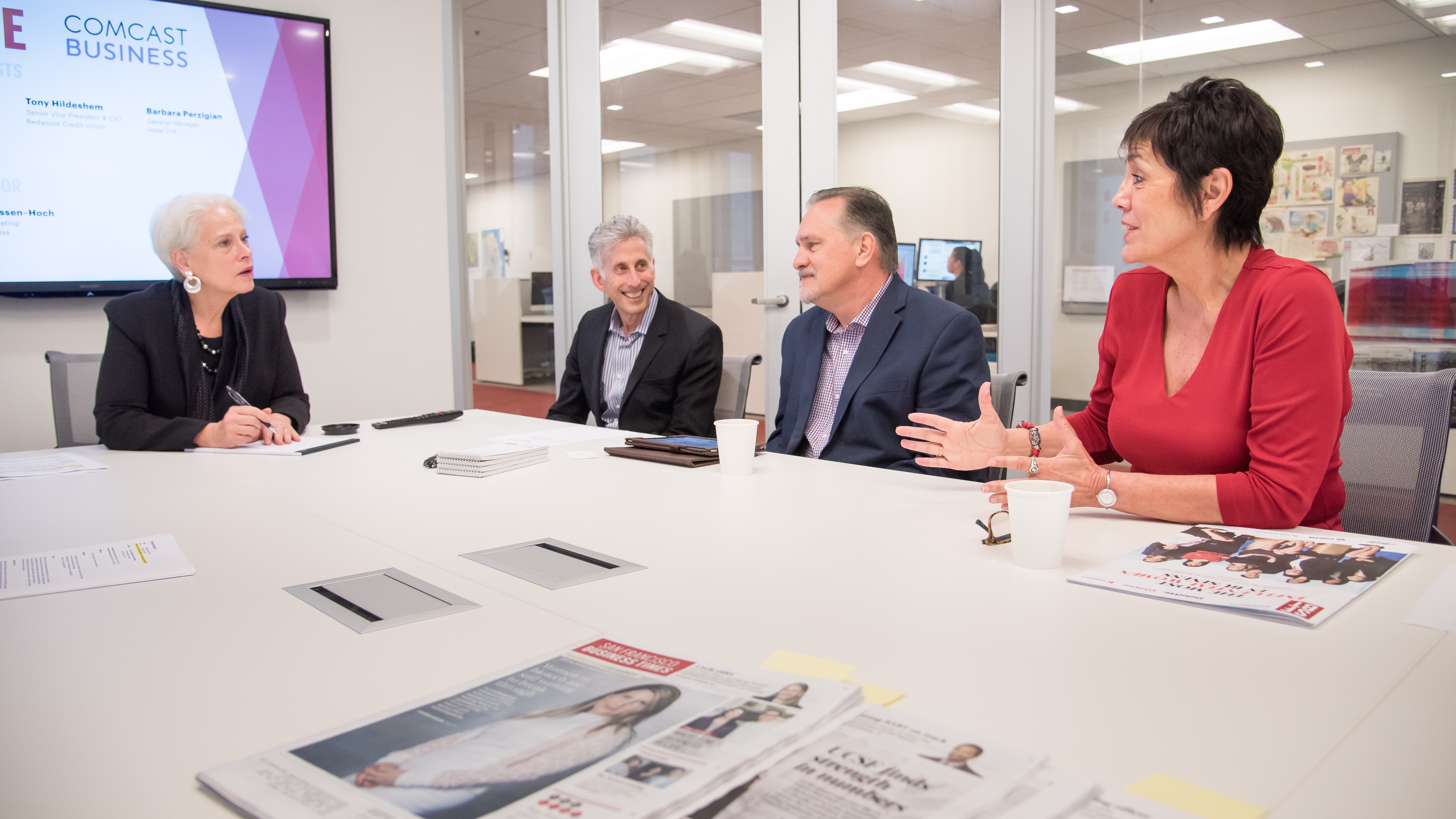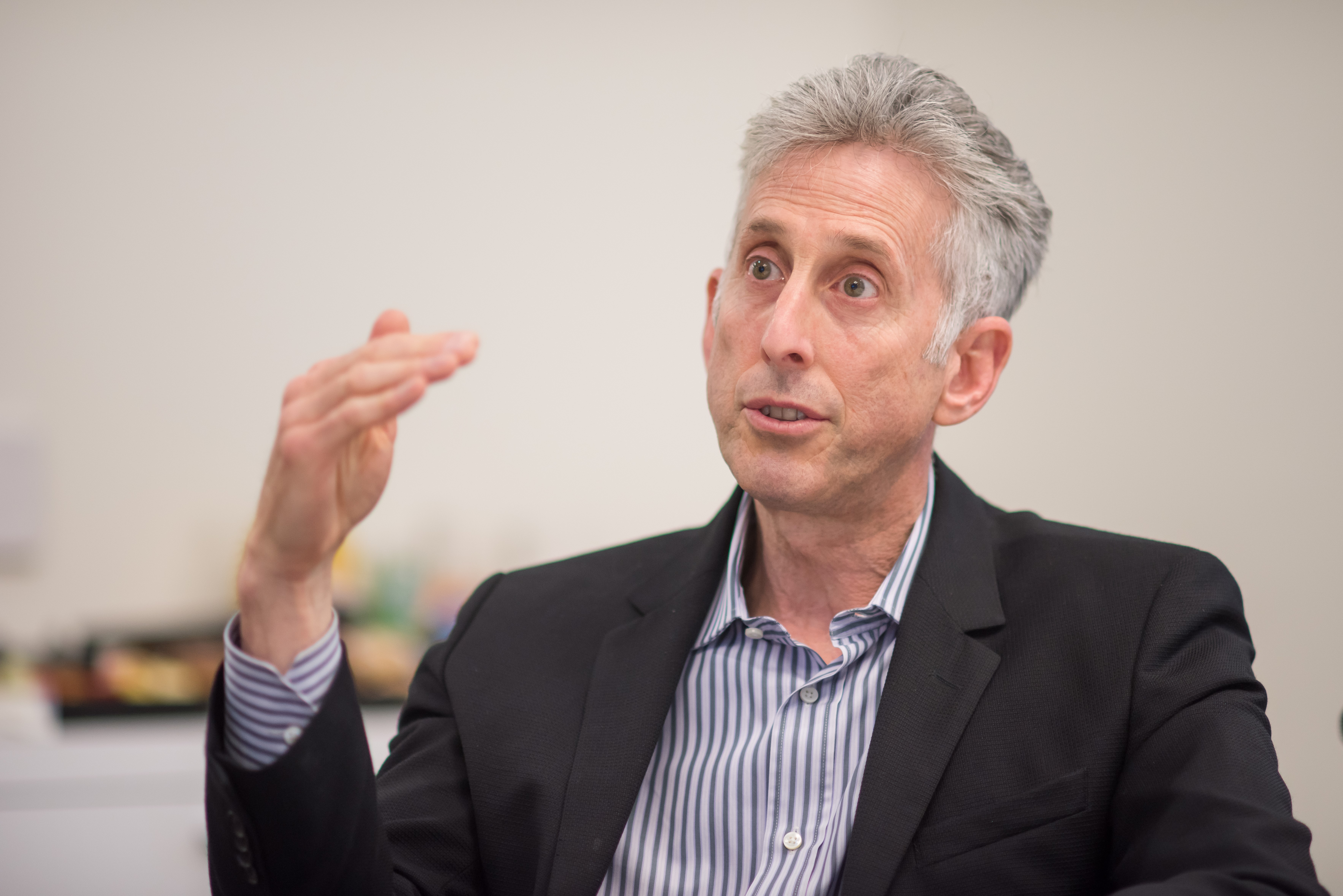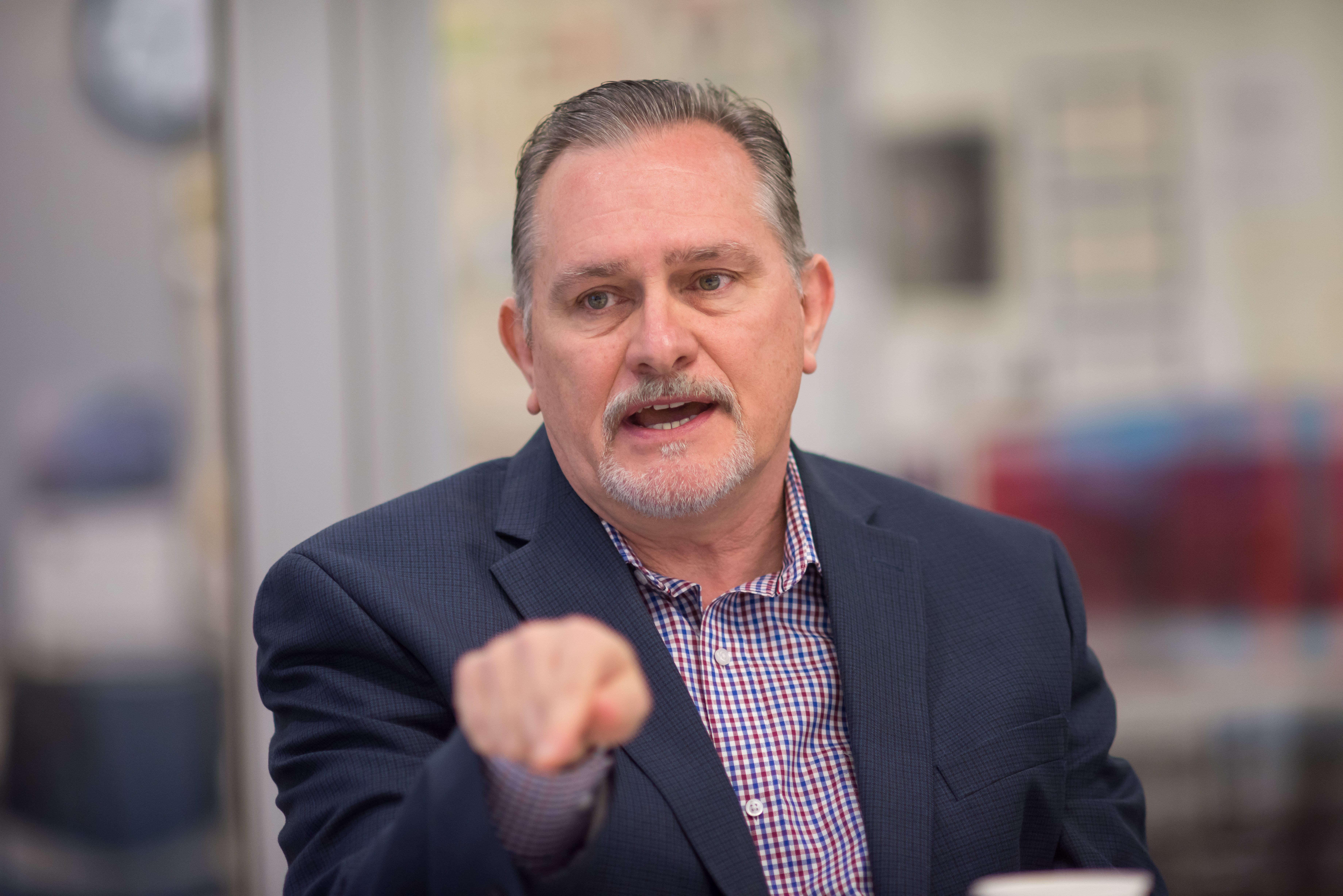A Sit Down with David Brown, Vice President of Comcast Business, California – What Today’s IT Leaders Need to Know to Drive Strategic Outcomes

CIOs embrace cross-discipline job description
Spend a few hours in any major company today and you’ll quickly find that the lines that used to divide a finance professional from an IT specialist from a business leader are hazier than ever. At many businesses, CFOs are dictating strategy and acting as the public faces of their respective corporations. New cross-discipline titles are popping up, like “chief innovation officer” and “chief data officer.” Some organizations don’t even have a distinct CIO anymore, preferring to instead hand over those duties to another C-level leader.
“Today, every technology decision is a business decision — and that’s something that’s shifted quite a bit in the last 20 years, at least in the financial services area,” says Tony Hildesheim, CIO for Santa Rosa, California-based Redwood Credit Union. “Companies aren’t hiring CIOs who only know technology. They’re hiring CIOs who understand the business drivers and the strategy and can apply technology to achieve the desired business objectives.”
While an understanding of business, strategy and other non-technology-related perspectives is important, it hasn’t led to the end of domain expertise.
“I need CIOs and IT leaders who I can count on to explain all the technology to me,” Barbara Perzigian, general manager of San Francisco’s Hotel Via, explains. “I need reports and empirical data to show me what will happen if I decide to invest in a given technology and what the payoff will be.”
The rise of technology as an essential component of every aspect of the business may have made CIOs more important than ever. David Brown, vice president of Comcast Business, observes that CIOs’ roles appear to become broader as technology is further imbedded in more functions.
“Protecting the organization from risk, saving money and growing revenues are always going to be top priorities for CIOs,” he says. “But there’s another aspect of the CIO role I see a lot of today, and that’s attracting and retaining talent. Employees and potential employees who come into your business will have questions about how engaged and productive they can be there using the technology platforms your organization empowers them with.”
Panel Discussion: The evolving role of the CIO

At a May 24 forum hosted by the San Francisco Business Times, panelists David Brown, vice president of Comcast Business, Tony Hildesheim, CIO of Redwood Credit Union, and Barbara Perzigian, general manager of the Hotel Via, discussed the CIO’s role in communicating technical concepts to CEOs, improving the customer experience through digital technologies and driving innovation for their organization. The discussion was moderated by Mary Huss, Bay Area president and publisher of the San Francisco Business Times and Silicon Valley Business Journal. Panel comments have been edited for length and for clarity.
What does the partnership between the CEO and the CIO look like today? What are the expectations for each role?
Hildesheim: It depends on the personalities of each. Most CEOs of businesses that are data-intensive, such as insurance and financial services, recognize that their strategies are highly dependent on what’s happening with their business’s data. When it comes to the strategy of the organization, I spend very little time selling the CEO on what piece of technology we need to invest in. The conversations are more about what strategies we’re taking and how technology aligns to that strategy. Every technology decision is a business decision—and that’s something that’s shifted quite a bit in the last 20 years, at least in the financial services area. Companies aren’t hiring CIOs who only know technology. They’re hiring CIOs who understand the business drivers and the strategy and can apply technology to achieve the desired business objectives.
Perzigian: The CEO is the “buck stops here” person. They have to be responsible not only for the efficient running of the business and the profitability of the business, but also for the customer experience. Both of those functions are very technology-dependent, and yet in both of those cases, you can easily end up employing technologies that don’t actually get you to where you want to go. That’s why it’s critical that the CEO have a strong relationship with the CIO or somebody that actually does understand all those technologies. The CEO may understand what the technology is supposed to do, on the business side, but they may not understand all the nuances of each technology under consideration.
What can CIOs do to ensure the successful adoption of new technology solutions?
Brown: Communicating the value of the new technology and training employees is essential, but the success of adoption actually starts well before you implement the technology—it starts with the user trials. Ultimately, you need to design a system that fits some need. Sometimes these new technologies get to the field and aren’t as ready or as relevant as they appear to be.
Hildesheim: The biggest failure in IT adoption is almost always people’s refusal to change their current processes and meet the benefit that the new technology brings. What often ends up happening is people buy a piece of technology or look for a piece of technology that mirrors the inefficient processes that they currently have. But when you talk about “disruptive technology,” which we talk a lot about in the business community, the disruption that’s actually occurring is somebody not worrying about the current processes and instead saying, “how can we make this experience better?” That means you need to completely throw out the processes that you currently have, most of the time. From my perspective, that kind of thinking starts with the CEO, not the CIO.
How should CIOs prioritize investments in IT?
Perzigian: Everything starts with the proper infrastructure. I’ve participated in retrofitting properties and building hotels from the ground up, and in each case we’ve invested heavily in infrastructure, because it supports everything else. If you don’t have that foundation in place, then forget all the things you want to do—you won’t have the network you need. We do our homework, though. You want everything to be future-proof, but at the same time, you can’t just bust the budget. I need CIOs and IT leaders who I can count on to explain all the technology to me. I need reports and empirical data to show me what will happen if I decide to invest in a given technology and what the payoff will be.
Hildesheim: There’s a right order in doing things. It used to be that “CIA”—confidentially, integrity and availability—was the CIO’s primary concern. Now, that’s just basic knowledge. What makes an effective CIO today is understanding business enablement. I see so many companies investing in technologies that might help to raise some revenue, but at the same time, they increase costs. Your job as a business leader is to figure out how to sustain and even lower costs while increasing revenue. To do that, order matters, and the first thing companies need to invest in is data. Only then can you really understand the sustainability of your costs and how you increase your revenue.
Brown: Protecting the organization from risk, saving money and growing revenues are always going to be top priorities for CIOs. Another important, indirect role of the CIO is attracting and retaining talent through the technology platforms the organization uses. When IT becomes a drag on the employee experience, it becomes harder to retain talent. CIOs not only have think about growing revenue now, but also about sustaining revenue over a longer period of time. Keeping and attracting talent is essential to that goal, but I find that it’s a lot harder for CIOs to find room in their budget for this purpose than for customer-facing technologies.
How should CIOs balance the desire to improve the customer experience with compliance requirements?
Hildesheim: The challenge is to look at compliance issues and at the way we currently do things and resist the urge to say “we can’t do this because of compliance” or “we should do things this way because this is how we’ve always done it.” For example, I challenged my staff when they said we have to offer a signature card. Really, why do we need a signature card? It’s actually a throwback to the days when you used to bring your bank book in. But you couldn’t look at my signature today and say “yes, it’s obviously him.” I’m not sure why banks still need to look at your signature. It’s stepping back and rethinking your business like that, and always asking “why do we need to do that? and “is there a way to get around it?” That really makes a difference for the customer experience.
Is there a limit at which technology no longer improves the customer experience?
Perzigian: I’m in the hospitality business, so while I’m always trying to improve the guest experience, I’m also always asking, “is this too much technology?” When you completely remove the human element from something, you’ve taken something away from that business. To me, the “h” in hospitality is human. You could put so much technology into a hotel that the guest would never have to see a person. But I don’t think that’s hospitality. If you go on one of those hotel review sites, the first comment you see is always, “the people are so nice there.” It’s true that guests benefit from the invisible technologies, and they also use the visible technology. Our hotel has a tablet next to the bed, for example, through which they can do everything from order room service to ask for more towels to have their car brought around. But with all that at their fingertips, they still write about how nice the people are when they stay at our hotel.
Hildesheim: My view is that the amount of technology you provide is just a matter of customer choice. There’s a customer segment that wants to be in your hotel, bank, restaurant, whatever for the technology, and they may not want to interact with—or limit their interaction with—people. I want our members to be able to choose to interact with and experience anything they want to, with or without a human being. I don’t even want our members to have to drive to the ATM, for example. I’d rather offer them the experience and convenience of depositing via mobile.
How can CEOs and CIOs bridge the communication gap that may exist between them?
Brown: When it comes to communication, the question I’m most concerned with is not “how can CIOs better communicate with CEOs?” but rather “how do we structure the organization such that customer and employee needs are being communicated upward to decisionmakers?” How do you define the requirements clearly enough so that you end up with a solution that fills the customer need? I think sometimes there are gaps there when you have a fully deployed product. There needs to be an effective way for employees on the ground, out there with customers, to communicate with leadership the needs of customers and how technology can fill those needs.
Hildesheim: The CEO’s purpose is not to be deeply knowledgeable about technology. Their purpose is to ensure that we are making good business decisions that achieve the company’s mission, vision and strategies. My job as a CIO is to ensure we implement technologies that enable the company to meet those challenges. If, as a CIO, I am talking to the CEO about the details of the systems from a technical perspective, then I am missing the mark. What I need to understand and communicate is how the technology investment is going to allow us to achieve our mission. At Redwood Credit Union, our CEO is focused on our mission of passionately serving the financial needs of our members. My focus is on ensuring the member’s experience of our technology is exceptional.
What should businesses know about disaster recovery and business continuity planning?
Hildesheim: Last year’s wildfires in Sonoma County reached just one block away from our Santa Rosa headquarters, so we learned a lot from the experience. Twenty-three of our staff lost their homes, but even through that, they came back to work as soon as they could and were dedicated to keeping the business alive. And we learned how important it is to have reliable technology partners. When our traditional telco lines burned, we called up Comcast to help us move things that were still connected through traditional telco. A crew responded within just a few hours, helping us quickly move everything that was still running through other telco carriers to Comcast’s network. We never had a single issue with Comcast through the fires.

David is vice president of Comcast Business, where he oversees sales and marketing, engineering, customer operations, financial performance and business strategy in California. His team provides the company’s broad suite of telecommunications and technology solutions for small business, large enterprise, and local and state government customers.
General Manager Barbara Perzigian brings two decades of independent boutique hotel experience to Hotel VIA, a 159-room property in San Francisco’s South Beach neighborhood. Previously, she was general manager of Silicon Valley’s Cupertino Inn and The Grand Hotel in Sunnyvale. Perzigian guided these two hotels successfully through two recessions, evolving each concept to compete against major brands in a harsh economy.
Tony Hildesheim

Tony is CIO at Santa Rosa, California-based Redwood Credit Union, where he manages day-to-day operations, strategic planning and management of information technology. He is responsible for all aspects of information systems and data management, as well as the electronic services department responsible for backend processing of electronic transactions.
For more on how Comcast Business is helping small businesses outmaneuver the competition, take a look at a customer testimonial from Redwood Credit Union: Redwood Credit Union Banks on Comcast Business
